Thursday, June 02, 2005
History of Oakland Heritage Church of God
It is impossible to appreciate the history of the building now occupied by the Oakland Heritage Church of God without looking at the life of the man who built the church in 1883. Here is his story.
Jacob Blickensderfer was born May 9, 1816 at New Philadelphia, Ohio. At the age of fourteen he was sent to the Moravian academy at Nazareth, Pennsylvania, and later he attended Franklin College in New Athens, Ohio.
In 1837 he entered the service of the State as a civil engineer. In February, 1839, he married Maria Louise Tshudy. In 1845 he again entered the service of the state as member of the Board of Public Works, serving for five years.
In 1862 President Lincoln appointed him to a committee to look into building a transcontinental railroad. In 1867 – President Andrew Jackson appointed Jacob to determine the eastern base for railroad. In 1869 Jacob attended Golden Spike ceremony on May 10.
For almost forty years he served as chief engineer of the Atlantic and PacificRailroad, and again as chief and consulting engineer on the Union Pacific railway. He was one of the original incorporators of the Union Pacific railroad, and located that line west of Green river.
He also located and superintended the construction of the Oregon Short Line railway, and a number of lines in Nebraska, Kansas, Colorado and Wyoming, for the Union Pacific Company, remaining in the service of that company until he retired from business in 1893.
In 1873, Jacob was commissioned to examine and re-measure the grand avenues in Washington DC. He writes of visiting President Grant: “Walking down Pennsylvania Avenue, I followed the iron fence which bordered the park…passed through the gate and took one of the walks to the Executive Mansion..The White House was brilliantly lighted with a thousand candles. Enormous silver urns held yellow roses. (Porter) showed me through East Room, Red Room, Blue Room, and Green Room , then into the conservatory and through State dining room. …..I was shown into the President’s office (where) President Grant received me graciously.”
Jacob’s son, Robert was a Civil War veteran and was given a grant to purchase land in southern Mo. He and Jacob visited the Oakland area for the first time in 1869.
In 1881 Jacob himself purchased his first 494 acres at Oakland in January and planted an orchard. In March he purchased another 220 acres to build his mansion. In April 1882 he purchased 80 acres for a church site for his denomination, the Moravian church headquartered in Bethlehem, PA.
His son Andrew was killed in hunting accident in 1886 and his body was shipped to Lebanon, carried by hearse to Oakland, and placed in the church with his brothers watching throughout the night. He was buried next day at the side of the church.
August 31, 1988 was date set for Jacob and his wife to leave Omaha to take their permanent residence in Oakland. Louisa became sick on their way to depot and they returned to their hotel. She died the next day without getting to live in her new home in Oakland. Mourners gathered at the Oakland house in the red room. She was buried Sept 3, 1888 beside her son in the cemetery next to the church Jacob had built.
The following notes were written by his biographer, taken from entries from Jacob’s diary:
“Once again Jacob sought refuge in the library. Two years have lapsed since Louisa’s death. Railroading was an integral part of the American way of life and the building of this enormous house was a folly. With the ringing of bell for Sunday School, a sudden thought occurred to him. The little church would be his only lasting memory.”
Jacob died at Oakland February 26, 1899.
Joan’s notes follow: (These notes were written several years ago and have not yet been updated.)
The church remained with the Moravian denomination until 1915 when the Moravians no longer felt it was feasible to have a congregation there. They deeded the land to the Methodists, and the Oakland Methodist Church was established there.
In June of 1999 the Methodist congregation had pretty much died out, with only a few families remaining and they decided to close the doors of the church.
I had resigned my pastorate in Farmington MO in May 1998 due to health problems and had moved back to Lebanon, doing some interim work at the Church of God in Columbia, and worshipping as a layperson, along with my husband, Milan, at the Highland Park Church of God.
In the summer of 1999 I was contacted by a Methodist friend who knew of the situation at the Oakland Church and I was told that the Methodists were looking for a pastor and congregation to give the church to. Even though living in Lebanon all my life, neither my husband nor I had ever been out to the Oakland community, which is located 8 miles East of Lebanon in a rural part of the county.
Along with Lynn and Brenda Wood, and Wayne and Kate Chambers,all of whom had a Church of God background but were not attending a Church of God congregation at the time, my husband and I incorporated as a not for profit religious organization, and began holding Sunday evening services in the local black Methodist church while we worked out the legal details of receiving the title to the Oakland Church.
We received a deed to the church and 30 acres of land in October 1999, and we held our first service there on the first Sunday in November, with 21 people in attendance.
Two of the Methodist families stayed with us to become charter members of the Oakland Heritage Church of God. Our congregation has grown to approximately 70 people who consider this their church home and our attendance runs in the upper 40’s and low 50’s as I write this in May 2005.
None of our members have come from any of the local Churches of God in Lebanon or Bennett Spring. Most of them were unchurched before coming to our church and many came because they were invited by my husband at his barbership, where he has been barbering in Lebanon since 1962. They in turn invite their family and friends and the church continues to grow.
I am blessed now to have my family worshipping with us at Oakland. My mother and father were divorced in 1946. My mother and stepfather made their church home with us immediately, but my stepfather died 3 years ago. Last fall my father and stepmother moved back to Lebanon, and they now worship with us. We are all just one big happy family, Praise The Lord!
My brother and his wife are members of the local Assembly of God, but they worship with us about half the time and help us out in the music program. My sister and her husband live at Gravois Mills and currently have their house for sale there, hoping to move to Lebanon where they can join us in worship.
Brenda Wood, one of the original charter members, is my husband’s sister, so they too are part of the family worshipping with us.
When we took title to the church, which was built in 1883, it was still a very well maintained church. It was furnished with a hand carved pulpit original to the church as were the pews which had been padded in recent years. The sanctuary was equipped with a sound system, an organ, and a piano. There is a fellowship hall with a fully equipped kitchen and a basement beneath the fellowship hall.
Since we began holding services there, we have installed vinyl siding on the church, upgraded the sound system, purchased a new digital piano (donated), purchased new Church of God hymnals, purchased an almost new 12 passenger church van, and a new refrigerator and chest freezer have been donated to us. The church sanctuary has been re-wired, and we built 2 Sunday School rooms and a furnace room in the church basement. We have also built a storage shed for our new riding lawnmower and other items. There is a stone cottage next to the church which still needs some work done on it. It was built by the Moravians in 1900 with walls over a foot thick to house their church records. There is a large masonry fireplace inside the cottage.
Each time I re-read the last passage from Jacob Blickensderfer’s diary, I think of how many sermons have been preached from the very pulpit I stand behind each Sunday, which is original with the church………and how many hymns have reverberated through this beautiful sanctuary……..and how many people have knelt and prayed at that altar………and how many children have walked those floors, from those now gone on, to adults now in their senior years, to the little ones, 2 and 3 years old who meet with us each Sunday. This church has housed worship services now for 122 years. That’s quite a legacy, and a challenge to me to minister there so that the legacy will continue long after I am gone.
Thursday, January 14, 2010
Subscribe to:
Post Comments (Atom)



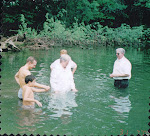


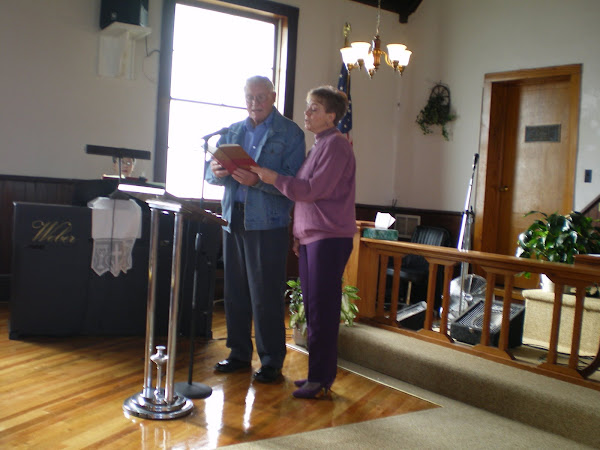
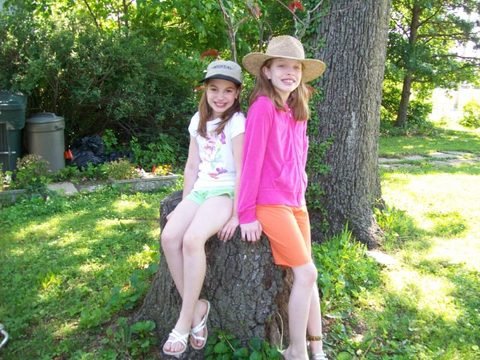
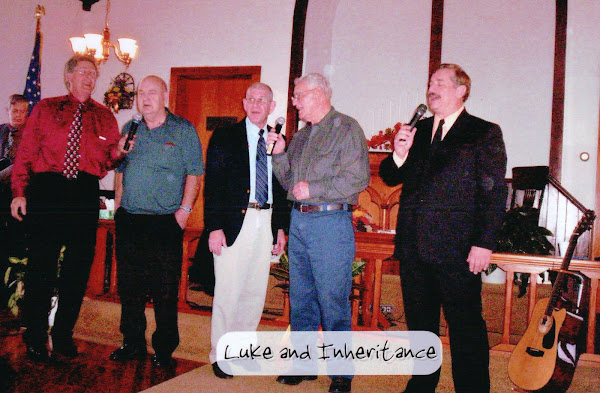
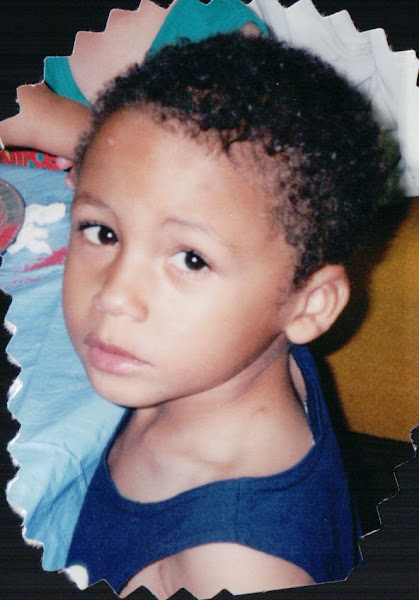
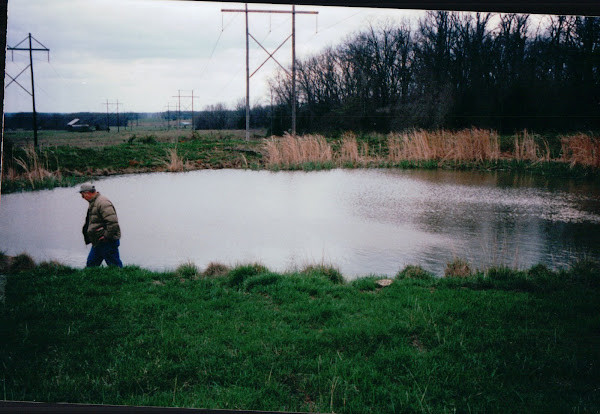
No comments:
Post a Comment